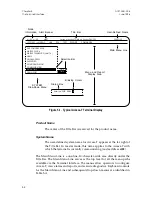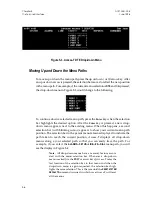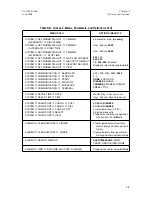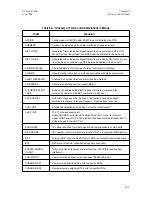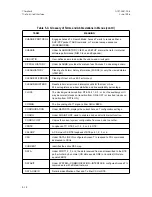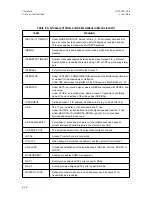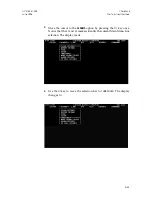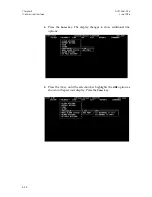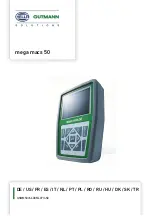
MENU PATH
OPTIONS / RESULTS
REPORTS
→
ONE-HOUR STATISTICS
→
TELCO
REPORTS
→
ONE-HOUR STATISTICS
→
USER
REPORTS
→
ONE-HOUR STATISTICS
→
AUX PORT
REPORTS
→
ONE-HOUR STATISTICS
→
FDL TELCO
REPORTS
→
ONE-HOUR STATISTICS
→
FDL USER
Display showing the one-hour count
of the specified register type in 4
latest 15-minute intervals.
REPORTS
→
LINE AVAILABILITY
Display showing the line availability
REPORTS
→
ESF ERROR COUNT
→
TELCO
REPORTS
→
ESF ERROR COUNT
→
USER
REPORTS
→
ESF ERROR COUNT
→
AUX PORT
REPORTS
→
ESF ERROR COUNT
→
FDL TELCO
REPORTS
→
ESF ERROR COUNT
→
FDL USER
Displays the number of recorded
ESF errors received at the
specified register.
REPORTS
→
MIB-II COUNTS
→
VARIABLE *
Displays the number of recorded
MIB-II counts received for the
specified group variables.
COMMANDS
→
CLEAR REGISTERS
→
USER
( AUX PORT, FDL USER)
COMMANDS
→
CLEAR ESF ERRORS
→
USER
( AUX PORT, FDL USER)
COMMANDS
→
RESTART NIM
COMMANDS
→
RESTART MUX
COMMANDS
→
RESET SYSTEM DEFAULTS
COMMANDS
→
BUFFER ERROR COUNT
→
CLEAR
COMMANDS
→
BUFFER ERROR COUNT
→
VIEW
COMMANDS
→
CHANGE PROTOCOL
COMMANDS
→
LOG OFF
Clears specified registers
Clears specified ESF error count
Restarts the NIM software
Restarts the Mux software
Resets system parameters to
their default values
Clears the User Buffer Error Count
Displays the Buffer Error Count
Initiates Protocol Search Mode
Exits the Access-T software
(if passwords enabled)
✝
One of 23 alarm types:
DTE: PORT1 LOSS, PORT2 LOSS, PORT3 LOSS, PORT4 LOSS
LINE: BPVS; YELLOW; AIS; USS; SIGNAL LOSS; SYNC LOSS; ES; LOOP
AUX PORT: BPVS; YELLOW; AIS; USS; SIGNAL LOSS; SYNC LOSS; ES
CHASSIS: MASTER CLOCK LOSS, NIM LOSS A, NIM LOSS B, INT COMM LOSS
∆
One of the following register types: Errored Seconds, Bursty Errored Seconds, Severely Errored
Seconds, Unavailable Seconds, Loss of Frame Count, and Controlled Slip Seconds (FDL Only),
(Bipolar Violations and ESF Errors included in User and Aux Port choices)
*
One of the following variable types: UDP, ICMP, IP, INTERFACE, or SNMP
Note: See Table 5-C for definitions of the terms and abbreviations used in the Access-T menus. All
definable options are retained upon power loss except those for local loopbacks and generated test
patterns.
Default options given in boldface.
Table 5-B. Access-T Menus, Parameters, and Options (cont’d)
Chapter 5
ACST-0351-005
The Terminal Interface
June 1996
5-12





